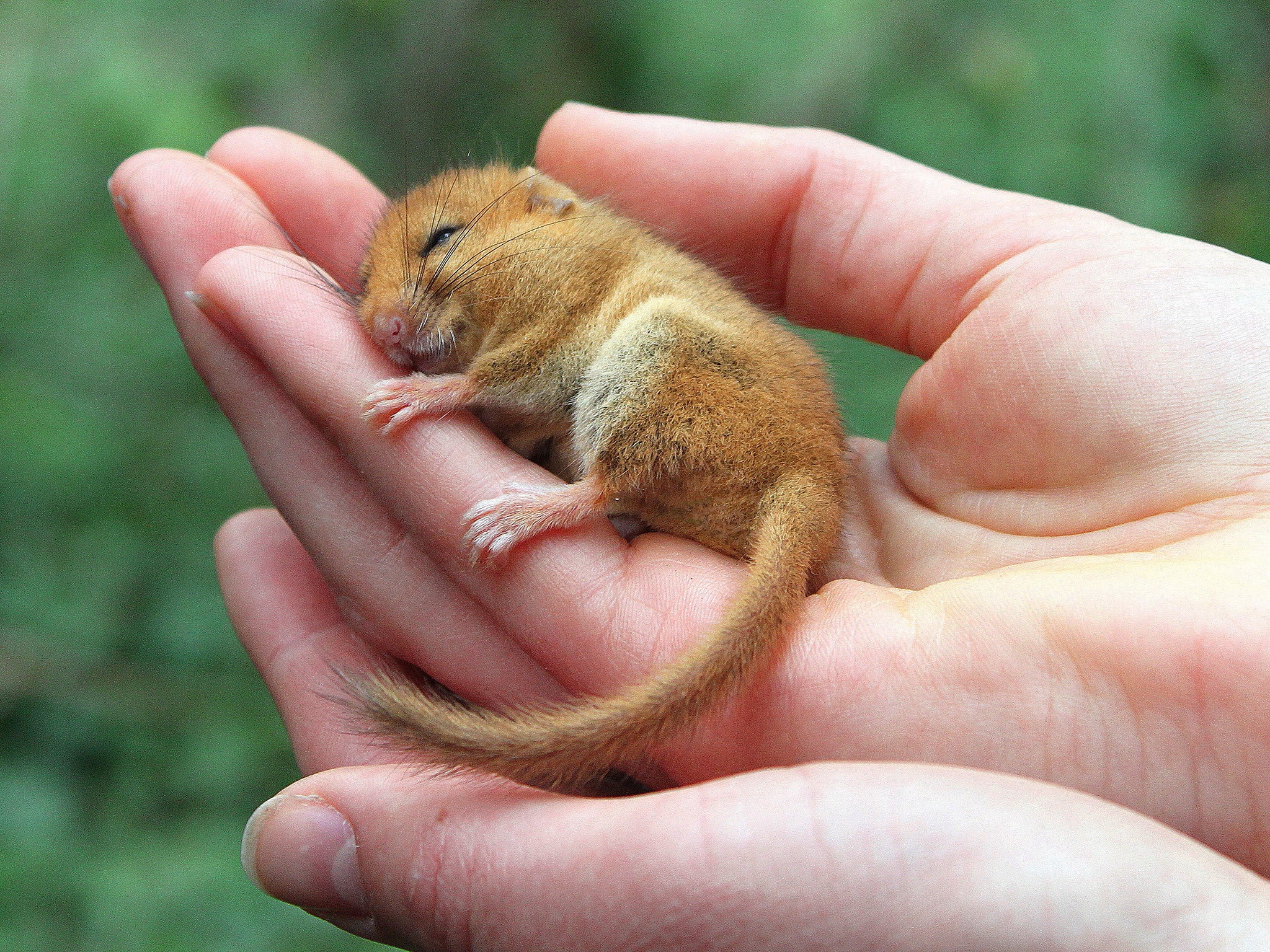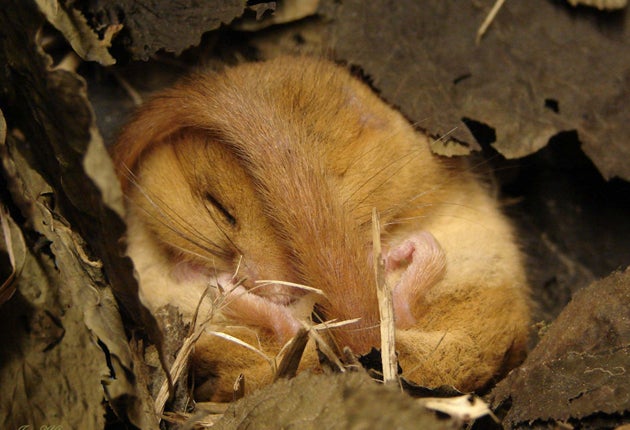Dormice in Britain facing extinction because of way woodlands are managed, warn scientists
Numbers of the rodents fell by over 70 per cent in two decades

The dormouse, one of the UK’s most cherished woodland species, faces a race against extinction as numbers of the animals have tumbled by more than 70 per cent in just two decades, scientists warn.
Hazel dormice – the only kind native to Britain – contend with habitat loss, climate change and woodland management practices which have had a devastating impact on populations across the country since the 1990s.
Research by a team at the University of Exeter examined data from 300 sites across England and Wales which detailed numbers, breeding trends and population changes in relation to climate, habitat and woodland management.
They found the animals were in greater abundance and reproduced in greater numbers during years with warmer, sunnier summers and consistently cold winters.
In addition, habitat connectivity and the active management of woodlands to increase diversity also saw greater numbers of dormice.
Dr Cecily Goodwin, who led the research, said the study “used nest box site surveys and volunteers and found that over 21 years at hundreds of sites across the country, dormice had declined by 72 per cent”.
The rate of decline is such that the animal could soon qualify as “endangered” in the UK.
“It’s hard to predict the decline into the future, but we looked at where it fits in with IUCN (International Union for the Conservation of Nature) classification which classifies threats to species. In Britain, the decline sits within the ‘vulnerable’ category. But it could even veer into them becoming endangered,” she told The Independent.
At the moment dormice are protected by European law and it is a criminal offence to disturb their breeding or nesting sites. This means developers have to survey areas to check if there are dormice there.
“This is good at preventing removal of habitat, but not as effective at promoting proactive conservation management,” Dr Goodwin said.
The species occupies an important part of the ecosystem as prey for animals such as owls, but they are also an indicator of the health of habitats with numbers correlating to the status of other species.
“The habitats that have been shown to be preferred by dormice are also preferred by other declining species such as some woodland birds and butterflies,” Dr Goodwin added.
The researchers are calling for forestry management that promotes diversity to help benefit species affected.
In particular, the researchers say coppicing could help boost the chances of reviving dormouse numbers. The practice involves cutting trees at the base so they grow up and out with lots of different stems, creating denser woodland with a lower under-storey and lower canopy.
“There were certain types of management practices that were used more frequently in the past, including coppicing and glade creation and path maintenance, which created a mosaic of different ages and structures. But this type of management is in decline,” Dr Goodwin said.
“Dormice like shrubby, regrowing areas as well as areas of older trees that provide the cavities where they can nest.”
Professor Robbie McDonald, who directed the research which is published in the journal Mammal Review, added: “There has been a decline of woodland management that creates diverse forests, and an increase in large stands of mature, single-age trees, which are not such good habitats for dormice or various other declining woodland species, such as some birds and butterflies.”

Wildlife charity the People’s Trust for Endangered Species collected the population data on hazel dormice depending on a team of registered volunteers.
Nida Al-Fulaij, from the charity, said: “We have been working hard to understand the ecology of hazel dormice, and the conservation issues they face, for over 20 years.
“With data collected by hundreds of dedicated volunteers, this research will enable us to work closely with woodland owners to ensure a brighter future for one of Britain’s best loved animals.”
The research comes just days after a review by Natural England and the Mammal Society warned at least a fifth of British mammal species could be completely wiped out within a decade.
The scientists said Britain was now on “a precipice”, and must take urgent action to save its mammals.
This month broadcaster and naturalist Chris Packham said the UK faces an “ecological apocalypse” and that “we need to wake up and smell the extinction brewing”.
Join our commenting forum
Join thought-provoking conversations, follow other Independent readers and see their replies
Comments
Bookmark popover
Removed from bookmarks